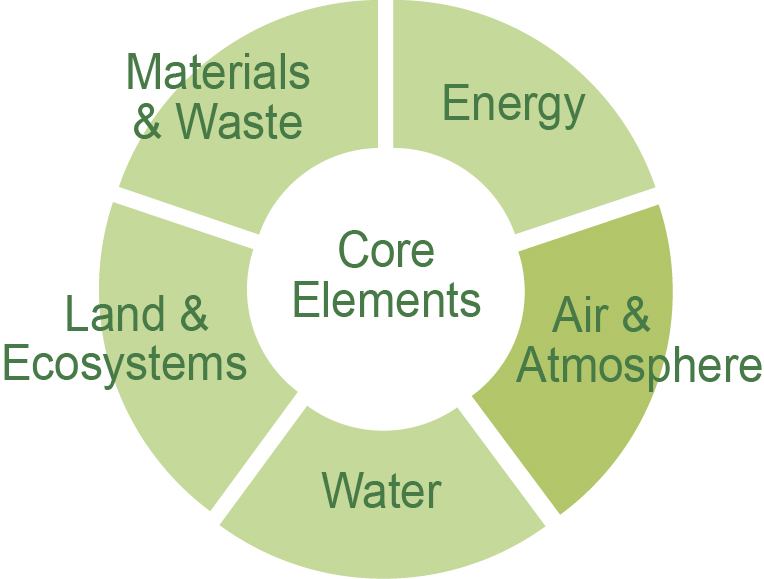Green Remediation Focus
Green Remediation Core Elements: Air & Atmosphere

Learn about the other core elements for green remediation strategies by clicking on them.
Green remediation strategies addressing air quality preservation build on requirements or standards under the Clean Air Act and Energy Independence and Security Act. Air emissions associated with site cleanup projects may be attributed to onsite activities such as operating heavy diesel-fueled machinery for remedy construction, or to offsite activities such as transporting required supplies or disposing of waste. A cleanup project's offsite environmental footprint also considers indirect contributions such as the use of grid electricity generated from fossil fuels. BMPs focus on opportunities to further reduce emission of greenhouse gases such as carbon dioxide and emission of criteria air pollutants (ground-level ozone, particulate matter, carbon monoxide, nitrogen dioxide, sulfur dioxide, and lead).
Sample BMPs
- Incorporate a high-resolution site characterization strategy, which uses high-density data sets rather than repeated field mobilizations to address information gaps as cleanup progresses.
- Deploy mobile renewable energy systems to meet the energy demands of remedial equipment required for relatively short periods or in remote areas.
- Use on-road or off-road utility vehicles fully powered by electricity.
- Use machine models capable of performing assorted tasks whenever feasible, to avoid field deployment of multiple types of machines.
- Cover material loads hauled by trucks or trains, to avoid aerial deposition of loose materials while potentially improving fuel economy.
Site-Specific Examples
- Remedy construction at the Elizabeth Mine Superfund site in South Strafford, Vermont, involved deploying new excavators equipped with engines meeting Tier 4 standards and other heavy machinery such as bulldozers equipped with diesel-electric power trains.
- Microturbines producing electricity from landfill gas at the Operating Industries Inc. Landfill in Monterey Park, California, over seven years met about 80% of the annual energy demand of the site's leachate treatment plant, which derived a $300,000-$400,000 savings in electricity purchasing costs each year.

